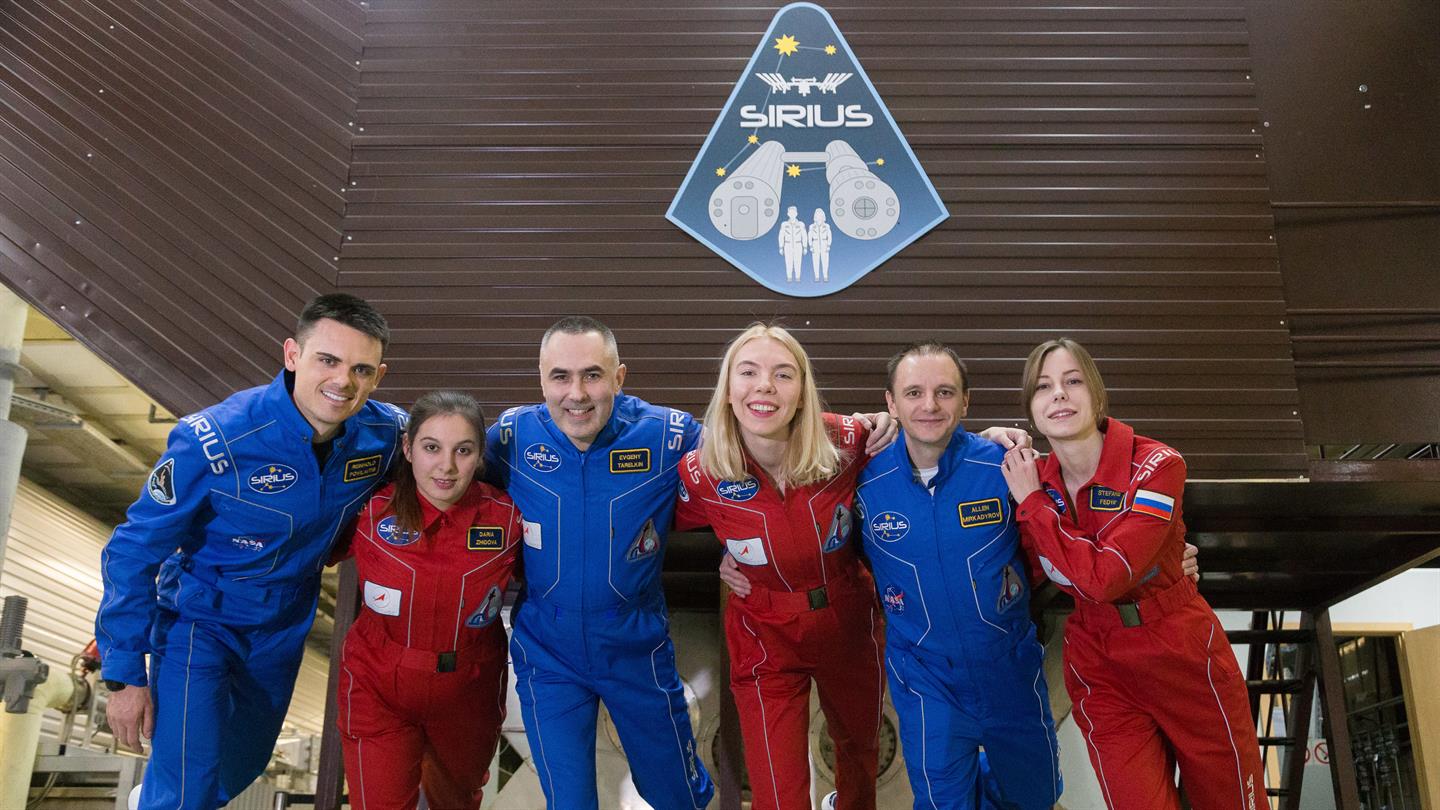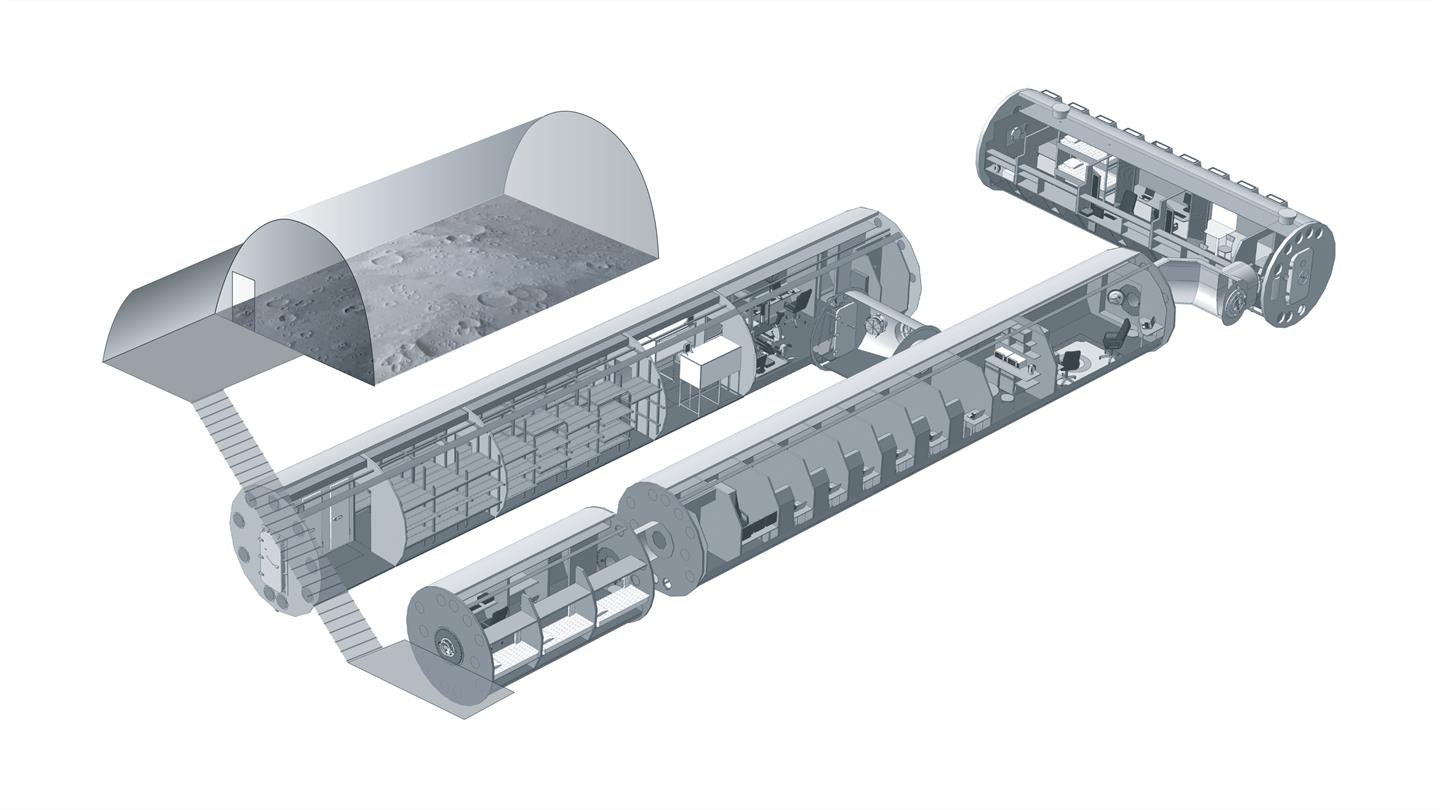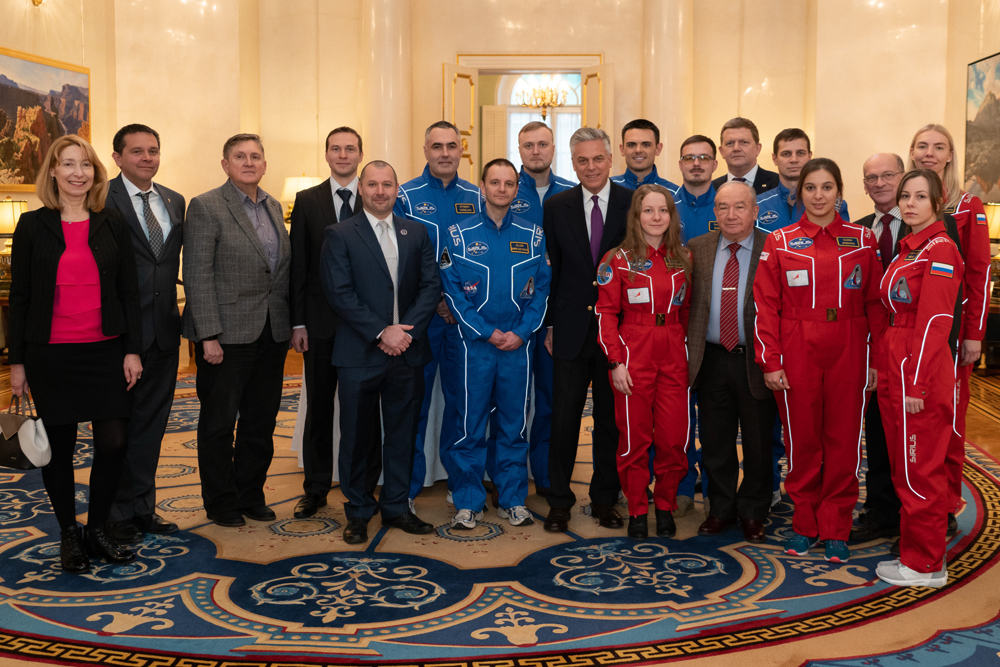
There's a Mock Moon Mission Underway in Russia

Russia's SIRIUS (Scientific International Research in Unique Terrestrial Station) experiment is now underway, simulating a flight to the moon.
Six members of the international SIRIUS crew started the 120-day experiment at Moscow's Institute of Biomedical Problems (IBMP) on Tuesday (March 19).
The SIRIUS-19 experiment is being conducted under the command of 44-year-old Russian cosmonaut Evgeny Tarelkin, who has carried out one space mission. Tarelkin's crewmates are fellow Russians Daria Zhidova, Anastasia Stepanova and Stephania Fedeye and Americans Reinhold Povilaitis and Allen Mirkadyrov.
Related: The 9 Coolest Mock Space Missions
Povilaitis is an analyst of research and operations on NASA's Lunar Reconnaissance Orbiter (LRO) mission. Mirkadyrov works in the Telecommunication Networks and Technologies Branch at NASA's Goddard Space Flight Center in Greenbelt, Maryland.
Christian Rogon is SIRIUS project manager at the German Aerospace Center (Deutsches Zentrum für Luft- und Raumfahrt; DLR) Space Administration. DLR is participating in the SIRIUS-19 isolation study together with the French space agency (CNES), under the leadership of the Russian space agency Roscosmos and NASA.
Moon visit
In addition to the numerous experiments and the many everyday challenges, one very special highlight awaits the SIRIUS-19 crew — a simulated visit to the moon.
Breaking space news, the latest updates on rocket launches, skywatching events and more!
“Exactly halfway through the SIRIUS isolation study, four 'cosmonauts' will land on the lunar surface in a small capsule," DLR's Rogon explained. "Once there, they will carry out several 'moonwalks' while wearing spacesuits, collect samples and prepare a 'settlement' on the moon — a very special experience."
Two "cosmonauts" will stay behind in the orbital lunar station and monitor the excursion. After the return and successful docking of the lander with the station, the whole crew will orbit the moon together for another 30 days. During this time, they will remotely control rovers on the lunar surface, dock more spaceships with the orbital station, and carry out numerous experiments before "returning to Moscow," a DLR statement on SIRIUS-19 noted.
NASA/IBMP collaboration
NASA and the IBMP have a long and successful history of collaborating on joint research related to human health and wellbeing in space.
NASA's Human Research Program and IBMP are conducting research to identify preventive measures and technologies to protect the health of astronauts and astronauts during spaceflight.
- Mars500: Photos From Russia's Mock Mars Mission
- Home On the Moon: How to Build a Lunar Colony (Infographic)
- Living on the Moon: What It Would Be Like (Infographic)
Leonard David is author of the forthcoming book, "Moon Rush: The New Space Race" to be published by National Geographic in May 2019. A longtime writer for Space.com, David has been reporting on the space industry for more than five decades. Follow us on Twitter @Spacedotcom or Facebook.

Leonard David is an award-winning space journalist who has been reporting on space activities for more than 50 years. Currently writing as Space.com's Space Insider Columnist among his other projects, Leonard has authored numerous books on space exploration, Mars missions and more, with his latest being "Moon Rush: The New Space Race" published in 2019 by National Geographic. He also wrote "Mars: Our Future on the Red Planet" released in 2016 by National Geographic. Leonard has served as a correspondent for SpaceNews, Scientific American and Aerospace America for the AIAA. He has received many awards, including the first Ordway Award for Sustained Excellence in Spaceflight History in 2015 at the AAS Wernher von Braun Memorial Symposium. You can find out Leonard's latest project at his website and on Twitter.



